Tucked away in the
Himalayan ranges, Sikkim is more than just a hub of beautiful natural panoramas. Though the second smallest state of the country still, Sikkim’s kaleidoscopic celebrations manage to leave behind even the biggest states.
With a rich and diverse culture, age-old traditions, and rural beliefs, Sikkim celebrates myriad of festivals throughout the year. These festivals are very distinct from the regular festivals. One major reason for the rapid growth in
Sikkim tourism is the increasing awareness of these unique celebrations.
If you are also going to visit Sikkim soon then, knowing about these festivals can be helpful for you. Of course, you would be able to mingle in all the festivities in a better way if you have advance knowledge. Let’s move to these special festivals of Sikkim:
- Drupka Teshi:
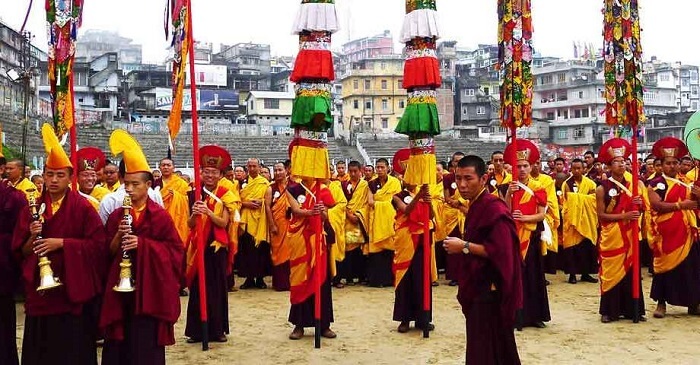 Drupka Teshi
Drupka Teshi
Drupka Teshi is a Buddhist festival which Sikkimese people celebrate with full zeal and passion. On this auspicious day, Lord Buddha has given his first sermon about four noble truths to his five disciples at the Deer Park, Sarnath. So, according to the Tibetan calendar, festivities of Drupka Teshi begin on the fourth day (Teshi) of the sixth month (Drupka).
On this special day, people collect at Deer Park or Muguthang to perform the act of mass prayer. It is followed by the yak race which is the main highlight of this festival.
- Saga Dawa:
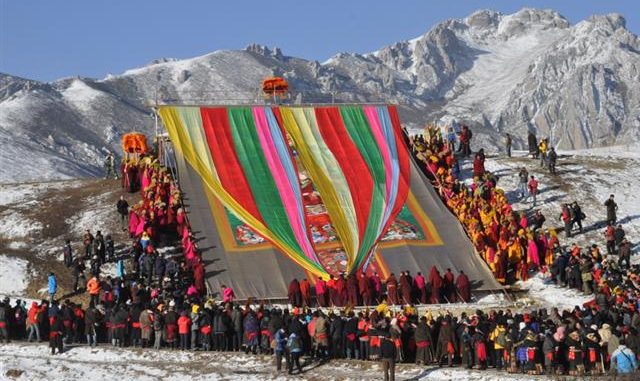 Saga Dawa
Saga Dawa
Saga Dawa is considered one of the most sacred festivals because of its triple celebrations. People of Mahayana Buddhist faith celebrate this festival on the full moon day of the fourth Buddhist month.
Three major occasions of the Lord Buddha’s life viz. birth, enlightenment and achieving nirvana are praised through this celebration. Locals visit the monasteries with butter lamps to offer as a token of their love.
- Pang Lhabsol:
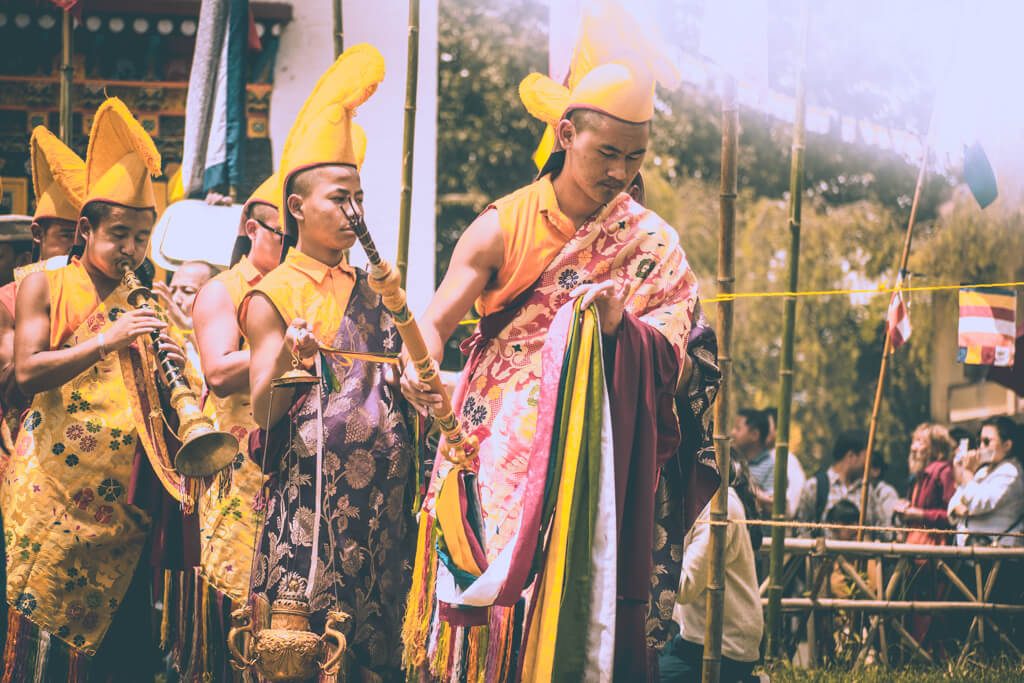 Pang Lhabsol
Pang Lhabsol
Pang Lhabsol is one of the unique festivals that you come across in Sikkim. This festival came into limelight due to the third Lord of Sikkim – ChakdorNamgyal. It marks the ancient blood brotherhood treaty between the Lepchas and the Bhutias which was witnessed by local gods and deities.
The folks also worship Mt. Kanchendzonga on the day of Pang Lhabsol. The lamas play the role of guardian deities by wearing a colourful mask featuring a crown of five skulls. They perform a fiery dance to depict the power and grandeur of the guardian deity. After this intense performance, jesters known as “Atchars” lighten the atmosphere by cracking some jokes.
- Bumchu:
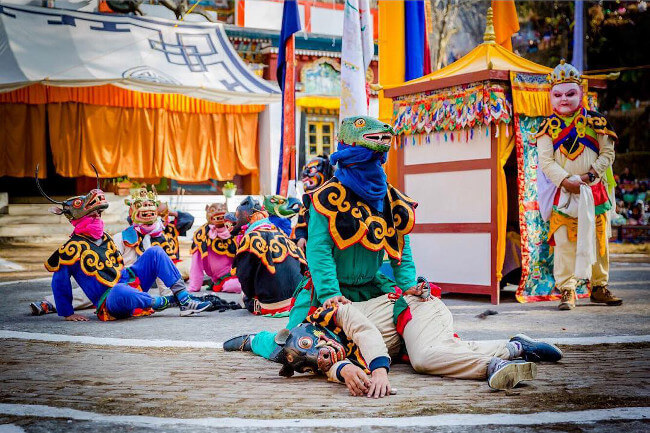 Bumchu
Bumchu
Celebrated at Tashiding Monastery in the West Sikkim area, Bumchu is also a special festival of Sikkim. In local language ‘Bum’ means ‘pot’ and ‘Chu’ means ‘water’. The celebrations take place during the month of January in which lamas of religious community open a special pot containing sacred water.
Lamas distribute some part of this water among the devotees. Afterwards, they refill the pot with fresh water and seal it for the next year. It is said that the level of this pot water depicts the prosperity of the future year. Overflowing water hints towards the disturbed condition of the upcoming year while dry pot implies starvation.
- Rumtek Chaams:
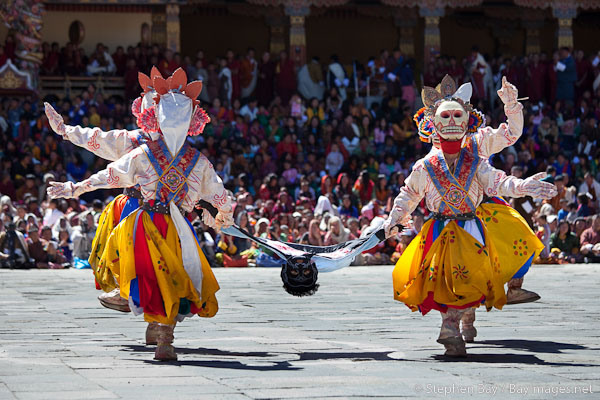 Rumtek Chaams
Rumtek Chaams
Chaam is a form of traditional lama mask dance and the opera performance of the locals. Rumtek Monastery is famous for organising the chaams with full eagerness and ardour. These chaams commence two days before the Tibetan New Year at Rumtek Monastery.
The dancers wearing different vibrant masks represent the eight distinct manifestations of Padmasambhava. He was an Indian sage responsible for spreading Buddhism in Tibet. This festival is also known with the name of ‘Tse Chu Chaam’.
- Losoong:
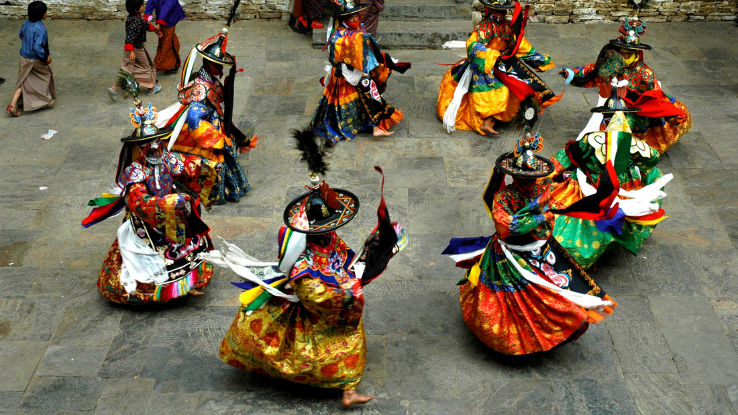 Loosong
Loosong
Loosong is a special harvest festival that is celebrated on Sikkimese New Year which is also known as ‘Sonam Losar’. As the harvest season ends on this day so, the farmers celebrate and cheer in the name of their good harvest.
Its celebrations start two days before the actual festival in all the prominent monasteries in the form of lama dances and special competitions. These dances play the task of expelling the evil spirits of the previous year and welcoming the holy spirits for the upcoming year.
- Dasain:
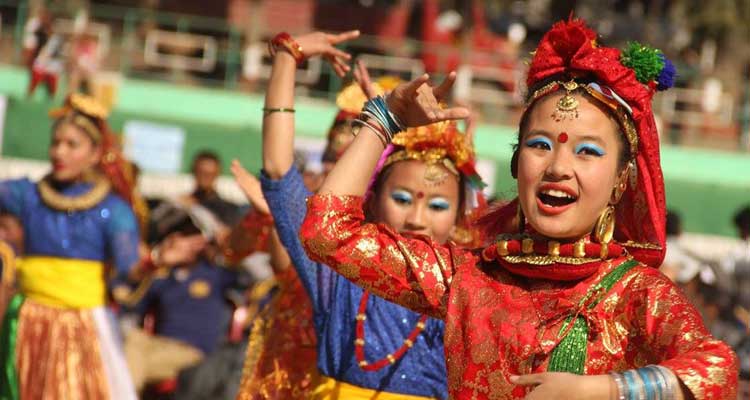 Dasain
Dasain
Dasain is a significant Sikkimese festival that is mostly celebrated by Hindu Nepali community of Sikkim. It takes place a few weeks after the celebrations of losoong in February. The festivities of Dasain signify the victory of good over evil forces.
On this occasion, people pray to Goddess Durga and plant grain seeds in the rooms of God. Older people of the community apply tika on the forehead of younger ones and shower blessings on them. On Ashtami (eighth day), Sikkimese people perform a well-known ritual ‘maar’ in which goats are sacrificed.
- Kagyat Dance:
 Kagyat Dance
Kagyat Dance
On every 28th and 29th day of the tenth month of Tibetan calendar, the festivities of Kagyat Dance are observed in Sikkim. The monks of Tsuklakhang Monastery usually perform this dance in front of a huge gathering of devotees in the monastery.
Before the beginning of this special Buddhist dance, monks offer prayers and then, through the medium of dance they plead for the prosperity and well-being of their community. The customary dance moves finish with the burning of some figures made up using flour, paper, and wood. It symbolizes the destruction of evil forces.
- Losar:
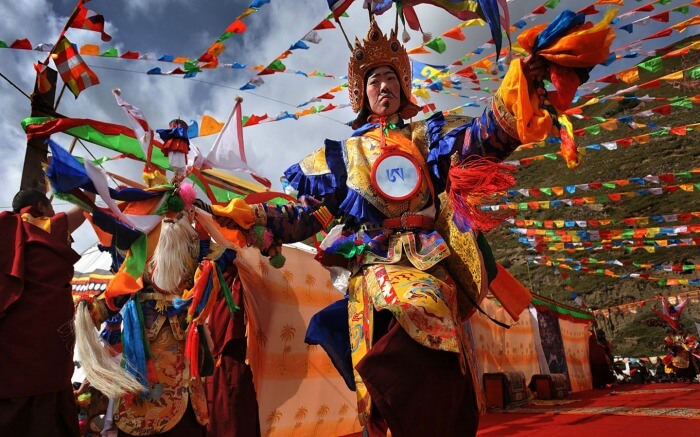 Losar
Losar
Losar is the Tibetan New Year with usually fell on February’s first day. Locals conduct various social events to welcome the New Year with immense joviality and merriment. All you will see is dance performances, special meals, and festivities engulfing the entire Sikkim on this day.
A few days before Losar, is the Guthor Chaam when lamas perform mask dances at the Pemayangtse and Rumtek monastery to welcome Tibetan New Year.
So, the culture and festivals of Sikkim are worth paying attention as you can’t see such festivities elsewhere. Sikkim tourism is taking great initiatives so that tourists can also become a part of Sikkim’s festivities. These colourful festivals would surely make a special place in your heart!
For more such interesting information on Indian travel, follow us on
Facebook,
Instagram, and
Twitter. Download our magazine
Spunky Indian for exclusive stories.






 Drupka Teshi
Drupka Teshi Saga Dawa
Saga Dawa Pang Lhabsol
Pang Lhabsol Bumchu
Bumchu Rumtek Chaams
Rumtek Chaams Loosong
Loosong Dasain
Dasain Kagyat Dance
Kagyat Dance Losar
Losar